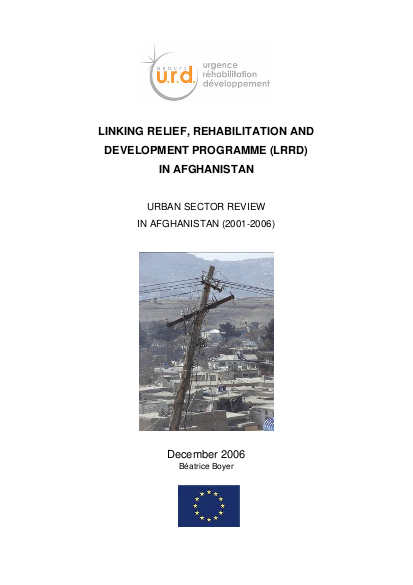
The urban situation in Afghanistan in 2006, five years after the fall of the Taliban and the beginning of the reconstruction process, is still chaotic and very fragile. The ever increasing urban populations suffer from lack of basic services. Urban and peri-urban zones are disorganised, polluted, crowded, some areas are deliberately overlooked by the overworked authorities in charge. Living conditions are very difficult and urban economy is not in a position to offer jobs. The situation is becoming dangerous in cities in terms of security, hygiene, health and environmental impact. There is a muted discontent1 about the reconstruction process which is not felt in urban areas.
The analysis below attempts to understand what stage the reconstruction process has reached, where the difficulties lie that are delaying interventions, which authorities are in charge of urban issues, how programmes are being drawn up and why only a few programmes have been implemented in 2006.
Investigations and discussions first of all came up against a highly disorganised sector which was a mere reflection of the disorder that reigned in urban contexts themselves. Secondly, the departments that were responsible for the reorganisation process were most reluctant to give information. In this study, we aim to present the keys for understanding progress and the roles of the institutional actors rather than paint an exhaustive picture of the situation.
Resource collections
- Topics
- UN Habitat - Urban Response Collection
- Urban Response - Urban Crisis Preparedness and Risk Reduction
- Urban Response Collection - Community Engagement and Social Cohesion
- Urban Response Collection - Economic Recovery
- Urban Response Collection - Environment and Climate Change
- Urban Response Collection - Housing, Land and Property
- Urban Response Collection - Urban Crisis Response, Recovery and Reconstruction
- Urban Response Collection - Urban Resilience